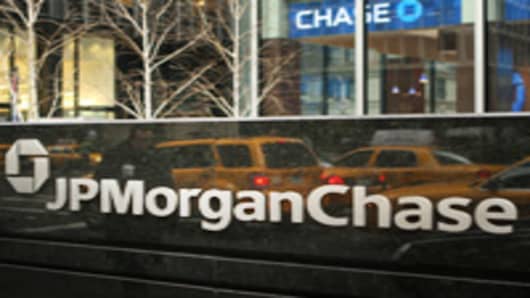Bank regulators, along with the U.S. Justice Department and the Securities and Exchange Commission have announced investigations of the hedging activity JPMorgan’s chief investment office and/or the company’s disclosure of the losses, and even the Federal Bureau of Investigation has been reported to open an investigation into the matter.
Graseck says that the “key to getting investors back into JPM is answers to three questions,” beginning on Wednesday, when Dimon will testify before the Senate Banking Committee.
Graseck’s first question — which she expects to see answered at Wednesday’s hearing — is “who knew what and when,” saying it is “critical to understand who in the organization" knew of accounting changes related to the losses, along with "the extent of the positions in question and trading strategy employed,” and “the size of the losses ... and when they knew it.” The analyst said that “if senior management outside the CIO office were aware of these three items,” she “wouldn’t be surprised to see senior management turnover which would be negative for the stock.”
The analyst says her firm is “assuming senior management was not aware of such details at the time first-quarter 2012 earnings were reported,” and gradually gained an understanding of the losses in late April, leading up to Dimon’s May 10 conference call.
Graseck’s second question — which she expects JPMorgan to answer in its second-quarter earnings release — is for “more specific details on the components of the trade, size of the trade, strategy employed, and how that strategy was executed over time.” At Wednesday’s hearing, she expects “to hear some discussion around the types of trades engaged in by the CIO,” along with a debate on what “risk” means, since a current yield for “five-year Treasurys at 71 basis points” represents “significant risk for bank portfolio if/when rates rise.’
When JPMorgan reports its second-quarter results in July, Graseck expects her third question to be answered, with “more detail on the latest mark to market of the position, size, max loss, and color on how analysts can potentially better forecast [the] ultimate loss.” The analyst also wants to know how “reducing risk in the CIO office” might affect JPMorgan’s net interest margin.
Graseck said that “our current back-of-the-envelope estimate gets us to [a] $7 billion loss” so far during the second quarter, although she admitted that “this is a very simplistic approach, as we’re solely looking at changes in IG9 2012 spreads relative to IG9 2017 spreads,” adding that “many on the Street are using this approach and assuming IG9 is the biggest piece of JPM’s trade.”
IG9 is the 10-year Markit CDX North America Investment Grade Index Series 9, which tracks credit default swap spreads, allowing investors to trade on the likelihood of defaults among a group of 125 companies.
Graseck said that her firm’s rough estimate “is too simplistic for a very complex trade where outsiders cannot see the entire position,” and that she expects “the company to deliver more detail and clarity on the 2q12 earnings call.”
Graseck continues to rate JPMorgan “overweight,” with a $54 price target, and on Monday left her 2012 earnings estimate of $4.35 a share and her 2013 earnings per share estimate of $5.62 a share unchanged, while lowering her 2014 earnings per share estimate by a dime to $6.55.
The analyst thinks “JPM can take share in European deleveraging, benefit from faster housing reserve bleed, return capital to shareholders, and has room to become more efficient, all driving upward earnings per shar erevisions,” adding that “we like JPM’s growing market share, efficiency focus, share gain from Europe, and declining mortgage foreclosure costs in 2013, all of which should lead to rising [return on equity].”
JPMorgan’s shares returned 3 percent year-to-date through Friday’s market close, following a 20 percent decline during 2011. Based on a 30 cent quarterly payout, the shares have a dividend yield of 3.56 percent.
The shares trade for 1.1 times their tangible book value, according to Thomson Reuters Bank Insight, and for six times the consensus 2013 earnings per share estimate of $5.33, among analysts polled by Thomson Reuters. The consensus 2012 earnings per share estimate is $4.33.
—By TheStreet.com’s Philip van Doorn
Additional News: Greenspan Unimpressed by JPMorgan Trading Losses
Additional Views: Raymond James Slashes Banks Ahead of Summer of Doom
_____________________________
CNBC Data Pages:
______________________________
Disclosures:
TheStreet’s editorial policy prohibits staff editors, reporters, and analysts from holding positions in any individual stocks.
Disclaimer


